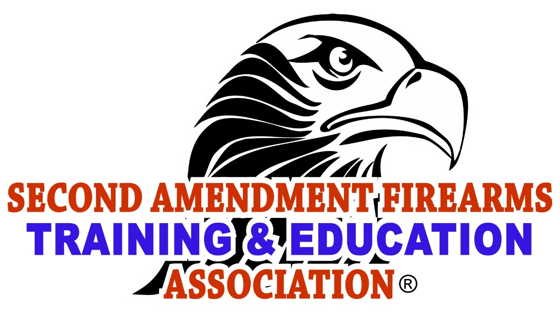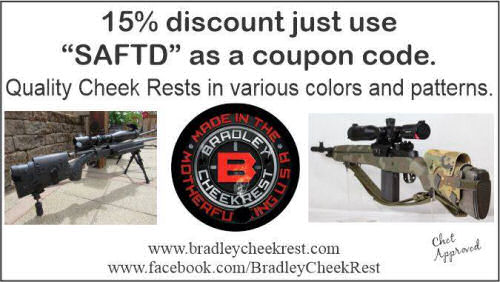Just the Basics – Best Caliber – Best Gun for you to carry
I’ve seen this discussion pop up for years and years and . . . well, you get the idea – for as long as there have been handguns for personal defense – the argument over what’s the ‘Best” caliber and what’s the “Best” gun has been on the lips of many an expert.
Let’s set the context of the argument first. As a defensive firearms trainer, folks that come to me for training come for that specific focus – defensive shooting. They are asking me (and all defensive fire arms trainers as well) a profoundly important question.
“What is the best handgun I can use to defend my life?” That’s a pretty weighty question. There are a lot of people who have gotten some truly poor advice – typically given through laziness, ignorance or simply the desire to “make the sale”. Let’s spend some time on this topic.
Use of your defensive handgun.
First, let’s look at why, exactly, you carry a defensive handgun. Its purpose is to defend your life, the lives of your family or folks in your charge . . . TO. DEFEND.THEIR.LIVES. ponder that thought just a bit. It’s not to make holes in paper, for entertainment on a range, for the enjoyment you get from taking challenging training, for hunting. At the instant you draw your handgun from its concealed location it is life and death. Take some time to chew on that just a bit because the intensity, the “stakes” of that moment is seldom part of the overall discussion.
Control of your defensive handgun.
In order to be effective in your defense – you must be able to control and manipulate your handgun. If you are unable to get “combat effective hits” (each “hit” does real damage to the threat’s ability to continue their attack) – your handgun is of little value. If you are unfamiliar with how your handgun works – it is of little value. If you can only control you handgun through the first round – and are then unable to manage its recoil and rapidly get back on the threat – it is of little value. If you experience a misfire, a failure to feed, a failure to eject, a double feed – and you are unable to clear these issues quickly – your handgun is of little value to you.
Bottom line – if you cannot use the tool you carry with you each and every day that you depend on defend your life, it is of little value to you. So let’s start there – with YOU – as we begin the examination of which is the BEST handgun for you to use for your personal defense and which is the BEST caliber to use.
You need to choose a handgun that “fits” you – with all your kinks, quirks, disabilities and physical characteristics – paying no attention to the caliber to begin with.
Revolver or Semi-Automatic
Running a semi-automatic handgun requires the ability to rack a slide, manipulate safeties, change magazines and clear cartridge failures “automatically”. This takes a couple of things – practice (lots of practice) and physical ability – especially hand strength and the ability to grip the handgun. Yes, there are special “techniques” a person can learn to help the processes – but under stress, with a bad guy/gal bearing down – is it wise to rely on special “techniques” to save your life? I would argue it is not. This is my decision point when recommending a semi-automatic (my preferred handgun) over a revolver – can the shooter physically manipulate the handgun easily? If they lack the physical strength and dexterity to do so – a revolver gets the call for me.
On the revolver side – a whole new array of challenges comes when a shooter is required to reload quickly. Still, for those without the strength to manipulate a semi-automatic pistol, I find they typically can utilize the cylinder release and use a speed loader. Granted – fewer rounds, it can take longer to reload – yep, I get it. But, at least they CAN reload. As for clearing malfunctions, a simple press of the trigger advances the cylinder past the failed round – much easier that a “tap, rack” drill.
When making recommendations for which handgun a person should look at – please, take time to evaluate their physical abilities first. If they can’t run the gun physically, they have a real problem should the need arise.
Fit
As in anything from jeans to a ball cap – fit is important. Handguns are no different. Long ago and far away during the qualification round for my first carry permit the fellow in the lane next to me brought a Colt .357 6” Python as his qualifying handgun. I had a Colt Woodsman .22. He was tall and slender, took his stance, pressed the trigger for his first round . . . let’s be kind and say his qualification round did not go well. The qualification officer finally gave him a .22 Mark II and the fellow qualified just fine. My point? The Python was anything but a fit for the fellow as a defensive handgun.
A firearm should fit the shooter’s hand such that they can firmly and fully grasp the grip of the gun. The full 360-degrees of the grip should be enclosed by their hands without stress or strain. Next, it should direct the recoil straight back into the arm of the shooter. This means their grip should be high on the back strap and as close to being in line with the barrel as possible. Finally, they should be able to touch the trigger with the end 1/3 of their trigger finger without stress or strain and they must be able to press the trigger straight to the rear without the first segment of the trigger finger moving left or right.
Put these things together, and you have a firearm that physically fits the shooter.
Simplicity of Use
A firefight is chaotic, terrifying and mind numbing – at least first seconds . . . and all too often that is the deciding time between life and death. I am going to assume that the typical individual that carries a handgun for personal defense DOES NOT train regularly, DOES NOT get more advanced training and does little more than hit the range a couple of times a year with a box of ammo and makes holes in paper . . . and that is all they do. For those shooters – simpler is better which leads me to handguns with safe action triggers or long trigger pulls or a revolver as opposed to those with manual safeties. Fewer things to remember equates to a better first shot response time for those folks who simply do not spend time on the range.
Recoil Management
Once a round is fired, how quickly can the shooter get his handgun back on target to send a second round down range? That depends on their ability to manage the recoil of the handgun. If they have followed my suggestions about “fit”, the vast majority of the recoil is sent straight into their body. Add to that a proper grip and training on sight alignment, sight picture, trigger press and follow through – and an accurate first shot and a follow on second shot can be happen very quickly.
Caliber
For me – caliber selection pretty much comes last. First you need to find a handgun that fits the shooter, one they can manipulate quickly and easily. Can they get combat effective hits (read a center mass pie plate sized group) on a threat? And finally, can they control the recoil well enough to insure accurate follow-up shots with multiple rounds. It is at this point that caliber begins to make an entrance for me.
The typical rule of thumb is that a shooter typically chooses a defensive round that is in a family of cartridges containing a .380, .38, .357, 9mm, .40 or .45 caliber bullet. The lowly .22 seldom makes the list and I typically would agree. However, if I have a shooter who can only manipulate and shoot a .22 cal revolver due to physical issues – I would never withhold that as a viable choice over nothing at all.
And, on the other end of the spectrum – I wouldn’t recommend a very large caliber round to a shooter who has a small frame and small hands. My typical recommendation is the largest caliber that they can manage the recoil on and get combat effective hits when stressed. That will tell the tale to me and help me make a solid recommendation to a new shooter as to what style and caliber of handgun they should purchase for their personal defense.
For a handgun to be of value for personal defense – the shooter must be able to “run the gun” and manage it when it’s fired. ALL of that goes into the mix when both selecting the gun and selecting the caliber of the gun.
It isn’t just about the caliber of the ammunition . . . it’s about the marriage of the shooter, the handgun and the ammunition that will make it a true tool for the shooter’s personal defense.


